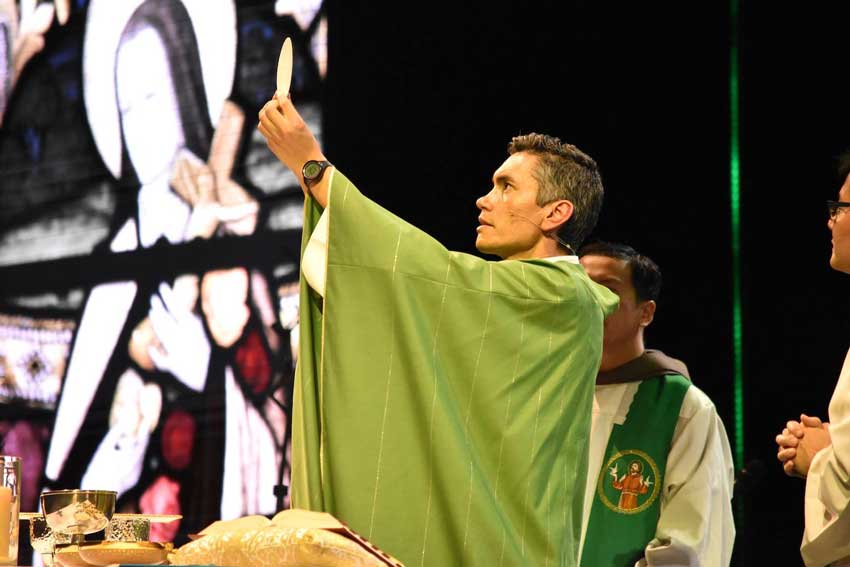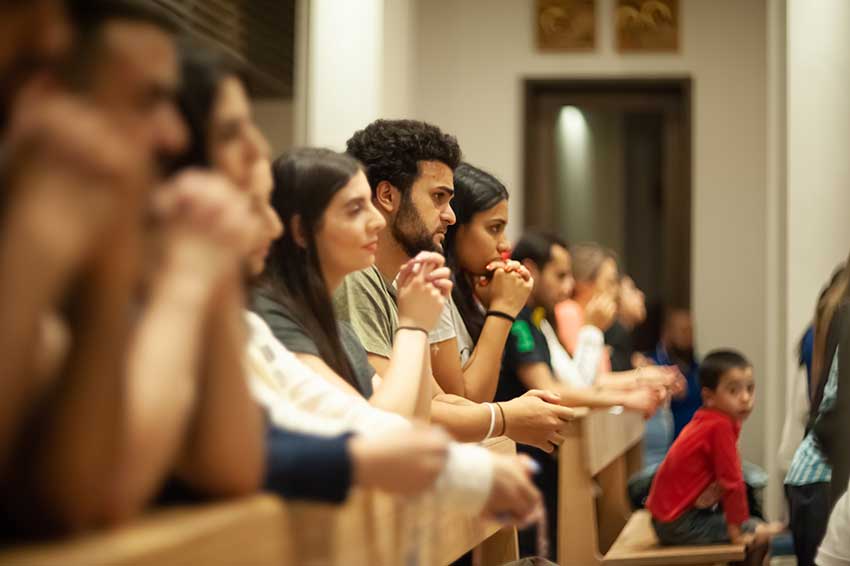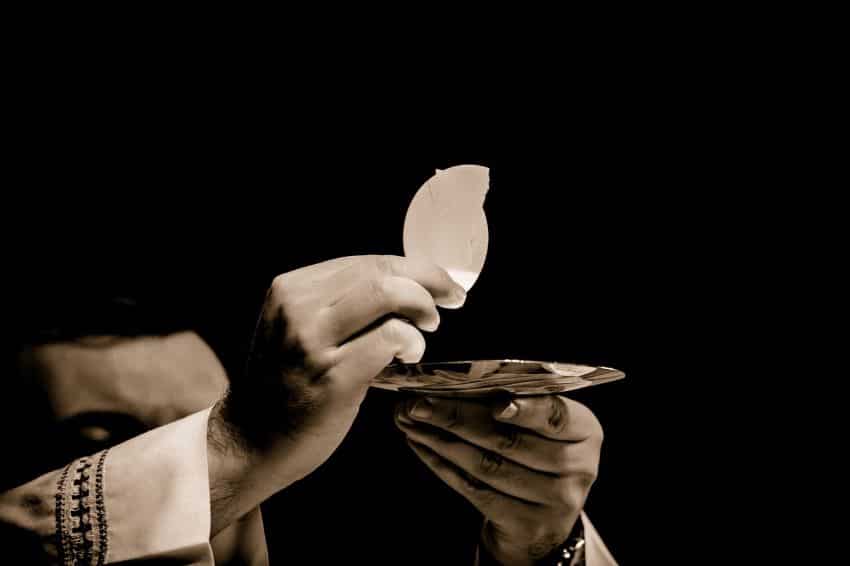
Way back in what we imagine were the catechetically intact 1950s, the brilliant and irrepressible Catholic writer and Southerner, (Mary) Flannery O’Connor, was listening uncomfortably and silently to a group of socialites sharing opinions and fancies. One Catholic woman burbled dubiously about the symbol of the Eucharist and it was too much for Flannery:
“I then said, in a very shaky voice, ‘Well, if it’s a symbol, to hell with it.’ That was all the defence I was capable of but I realise now that this is all I will ever be able to say about it, outside of a story, except that it is the centre of existence for me; all the rest of life is expendable.”
This mysterious but real centre of Flannery’s and the Church’s existence, her belief and devotion to this saving work of the Blessed Sacrament of Jesus Christ, is not, it seems, shared by the majority of American Catholics according to an interfaith Pew Research Centre survey released in early August.
A total of 69 per cent (7 out of 10!) of the Catholics (1,835) thought that the Eucharistic species were “symbols of the body and blood of Jesus Christ” and 43 per cent thought that this was the Church’s teaching.
While 50 per cent of those surveyed accepted what the Catholic Church taught about the real presence, only 31 per cent said they believed that the elements “become the actual body and blood of Christ” during the Mass (the wording used in the survey).
Less surprisingly, practice and belief are clearly linked in one way or another. 87 per cent of the Catholics who rarely attended Mass opted for the “symbolic” sense of the Eucharist, while 63 per cent of those attending Mass each week believed in the real presence in the Sacrament.
Still, that left among the weekly Mass faithful, 37 per cent (4 in 10) in the symbolic camp and 23 per cent of these unsure about the teaching at all.
While some of those over 60 years of age seemed to remember their Year Two catechesis (38 per cent), of those born during and after the Second Vatican (40-59 years) 72 per cent thought that the Eucharist was “symbolic.”
The aim of the Survey was not an in-depth study of Catholic faith specifically.

It was titled What Americans Know About Religion and aimed to discover, via a series of multiple-choice questions, the accurate “religious knowledge” held by American people both of their own religious affiliation (and their belief) and that of other affiliations.
The Survey was conducted on-line between February 4 to 19 this year among 10,971 people who were recruited by random phone sampling.
These results were cross-referenced with questions about worship attendance and commitment to faith study, along with the usual questions about age, geographical location, ethnicity and sex etc.
It’s interesting that the Survey was unafraid to ask fairly straightforward questions about deep religious mysteries. For instance:
“Question: Which best describes the Trinity? One God in three persons (Father, Son, Holy Spirit), there are three patriarchs (Abraham, Isaac, Jacob), coming of Christ foretold by three prophets (Elijah, Ezekiel, Zechariah), there are three Gods (Father, Mother, Son)?”
Eighty five per cent of all Catholics got this right (compared to 90 per cent of Evangelical Protestants), but it is worth noting so did 72 per cent of Jews and 87 per cent of the atheists!
Even the “nothing in particular” – a third of the famous “None” category were, in 64 per cent of the cases, able to work out the right combinations of Persons in the Trinity.
One wonders how the famously less overtly “religious” Australian people might fare across all these questions?
Los Angeles media-evangeliser, Bishop Robert Barron, was right to post that the survey shows “it’s been a massive failure of the church carrying on its own tradition!”
Catechesis and new evangelisation of adults and children have not been tried and failed – they have not been comprehensively and seriously considered in many parts of the Church.
Barron, Rod Dreher and other “big hitters” in the religious media-sphere have provided worthwhile commentary on this Pew Survey.

However, perhaps the most poignant comments, especially for our Australian experience, come from the popular Catholic spirituality and life writer Amy Wellborn.
She, like Flannery O’Connor, gives the “side-eye” (as she says) to those fashionable proponents of ‘cultural’ Catholicism.
Why, she asks, are people carrying on about the Survey? Why be surprised? (Why are we in Australia so surprised that so many ideas about the Church and Church doctrine coming into the Plenary are so mixed and divergent?). The results reflect what we have known since the 1970s.
Firstly, she notes, we all know (as we in Australia know) that “only a tiny, tiny number of people go to Mass each week.” We simply do not place ourselves at the “source and summit” of our faith whatever other good things we think or do.
Secondly, she notes, we all know that Eucharistic presence, and sacramental reality more generally, have been majorly waffled in our heads and hearts into a beige shoulder-shrugging version of communitarian feel-goodism.
Wellborn writes that most Catholics: “have been taught for the past few decades that there is no need for a unique, particular Presence: God is always with you anyway. You can pray all the time anywhere, anyway. The official Church’s account of the divine is no more authoritative or revelatory than your own experience, anyway…”
If we don’t go to Mass, still less do we go to or appreciate the now near-defunct Sacrament of Penance or the need for Christ’s saving power.
No wonder we don’t understand marriage. How many kids in our parishes make their First (and last) Holy Communion? (The core of this metaphysical and sacramental problem was a key to the studies of the now former John Paul II Institute for Marriage and Family in Melbourne.)
There is a third deeply troubling observation by Amy Wellborn: that is the scandal of the loss of faith amongst our priests, religious and bishops – who by their fluffing, omissions and also by their record of bad behaviour, fail to either teach or witness to the Eucharistic Christ. How would US and Australian clergy dare to tackle Pew Research quiz?
